The cells are the basic autonomous biological, structural, and functional units of all living organisms. There are two main types of cells –
- Prokaryotic
- Eukaryotic
The main difference between these two types of cells is the defined nucleus, existing only in eukaryotic cells.
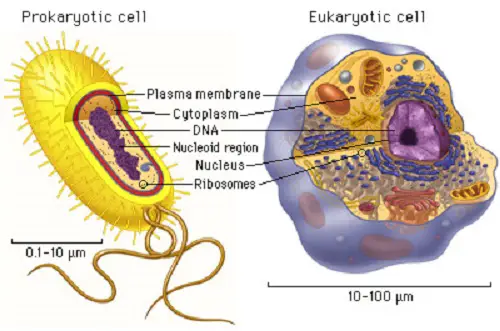
What is Prokaryotic Cell?
Prokaryotic organisms include eubacteria (bacteria, cyanobacteria, actinomycetes) and archaebacteria.
Most prokaryotic organisms are unicellular but actinomycetes, many cyanobacteria, and some bacteria are filamentous colonial organisms.
Prokaryotic cells are small, usually 1-20 μm. Each prokaryotic cell is surrounded by a lipid cell membrane. In the middle of the cell is located its genetic apparatus – a single DNA molecule called a bacterial chromosome. If the cell is not dividing, its chromosome is only in one copy, i.e. the prokaryotes are haploid. The cell section occupied by the bacterial chromosome is called nucleoide. Functionally it corresponds to the eukaryotic nucleus but has no membrane.
The space between the nucleoide and the cell membrane is filled with a cytoplasm containing ribosomes. It can also have extrachromosomal DNA – small ring molecules called plasmids.
Heterotrophic prokaryotes do not have intracellular membrane system. Some autotrophic prokaryotes have intracellular membrane formations called lamellae containing molecules involved in photo- or chemosynthesis.
Outside of the cell membrane, almost all prokaryotes have a wall with a supporting and protective function. Sometimes there is an additional shell on the wall, called a capsule. Some prokaryotes move actively with one or more flagella.
The cells of some eubacteria, called bacilli, can under adverse conditions pass into a metabolically inactive and highly resistant form, called a spore.
Most prokaryotes are heterotrophs – saprophytes and parasites. Their cells release digestive enzymes. If the environment contains biopolymers, they are hydrolyzed. The resulting organic monomers pass through the membrane into the cell.
There are also autotrophic prokaryotes. Cyanobacteria photosynthesize like the green plants. Other bacteria photosynthesize using H2S instead of H2O. There are also chemoautotrophic prokaryotes – they get energy from oxidation of inorganic substances, with no light involved.
Breathing is aerobic and anaerobic. A number of prokaryotes have no respiratory chains. They synthesize ATP only for the account of regrouping the atoms of the compounds – energy sources. Such catabolic pathways are based on glycolysis and are generally referred to as fermentations.
Under favorable conditions, the prokaryotic cell grows continuously and synthesizes DNA constantly. Periodically, cell division occurs – the two bacterial chromosomes obtained at replication are located near the opposite ends of the cell, and in the middle, the cell wall grows and divides the cell in two.
Prokaryotes do not reproduce sexually. The closest similarity to a sexual process is the so-called bacterial conjugation.
What is Eukaryotic Cell?
Eukaryotic is any cell, which has a nucleus and other organelles, bounded by membranes. Protozoans, algae, plants, fungi, and animals are all eukaryotes. Eukaryotic organisms can be unicellular, colonial or multicellular. In general, the eukaryotic cells are bigger than the prokaryotic ones (10-100µm).
Despite the wide variety of cells, they generally have the same structures. Each eukaryotic cell has a cell membrane, a nucleus, and a cytoplasm.
The cell membrane is a universal cellular structure that is obligatory for all cell types. It isolates the cell from the environment. It has the property selective permeability, thus regulating the entry or exit of molecules from the cell.
The nucleus is a cell structure separated from the nuclear membrane from the surrounding cytosol. It contains the hereditary information recorded in the DNA molecules of the chromosomes. The number of chromosomes is species-specific.
The cellular content located between the cell and the nuclear membrane is called cytoplasm.
The cytoplasm consists of cytosol, organelles, and inclusions.
More than half of the volume of each eukaryotic cell is occupied by a colloid solution called cytosol. The cell organelles (structures in the cell that have a specific structure and function) are immersed in the cytosol. According to their organization, cellular organelles are two types – non-membrane and membrane. The non-membrane organelles include ribosomes, cytoskeleton, and cytocenter.
Membrane organelles are single-membraned (endoplasmic reticulum, the lysosomes, Golgi apparatus, and peroxisomes) and double-membraned (mitochondria and plastids).
Some of the organelles are found in all eukaryotic cells. They are called obligatory organelles – such as endoplasmic reticulum, lysosomes, Golgi apparatus, peroxisomes, mitochondria. Other organelles are found only in plants’ cells, such as plastids. In some cells there are also specific organelles – cilia, flagella, etc.
Above the cell membrane, eukaryotic cells have over-membrane structures. For animal cells, this is glycocalyx, and for plant cells, this is the cell wall.
Eukaryotic cells can be autotrophs, heterotrophs, anaerobic and anaerobic. There are no eukaryotic chemolithotrophs.
Eukaryotic cells generally reproduce asexually, by division (mitosis). This process allows each daughter cell to receive one copy of each chromosome. The reproduction of eukaryotes can also be sexual, typically involving a sequence of haploid and diploid generations.
What are the Similarities Between Prokaryotic and Eukaryotic Cells
Similarities in Terms of “Basic Chemical Structure”
Both cell types composed of proteins, carbohydrates, nucleic acids, fats, minerals, and vitamins.
Similarities in Terms of “Cell Membrane”
Each cell, prokaryotic or eukaryotic, has a cell membrane that separates it from the environment and regulates the selective transport of substances entering and exiting the cell.
Both cell types have a stretch of the cell membrane, supported by a cytoskeleton.
Above the cell membrane exist over-membrane structures (glycocalyx, cell wall, etc.).
Similarities in Terms of “Cytoplasm”
The most of the cell (prokaryotic or eukaryotic) is occupied by the cytoplasm.
It is a semi-liquid substance with a complex chemical composition and granular structure, which connects the individual cell parts.
The cytoplasm carries out the formation of substances and their destruction with the release of energy.
In both types of cells, the major component of the cytoplasm is the cytosol.
Similarities in Terms of “Nucleic Acids and Genes”
The hereditary information is stored in genes.
Both prokaryotic and eukaryotic cells have DNA as a basis for their genes.
The replication and synthesis of DNA are done in the same way in prokaryotic and eukaryotic cells.
Both prokaryotic and eukaryotic cells have RNA.
Similarities in Terms of “Protein Synthesis”
The protein synthesis is performed similarly, involving ribosomes.
Similarities in Terms of “Basic Life Processes”
The different representatives of prokaryotes and eukaryotes can be autotrophs and heterotrophs.
The different representatives of prokaryotes and eukaryotes can have aerobic or anaerobic breeding.
Both cell types can reproduce independently.
Some representatives of prokaryotic and eukaryotic cells use flagella for motility.
Similarities in Terms of “Energy”
Both prokaryotic and eukaryotic cells need energy and have similar energetic processes. The main energy source for prokaryotic and eukaryotic cells is the adenosine triphosphate.
Summary:
- There are two main types of cells – prokaryotic and eukaryotic. The main difference between these two types of cells is the defined nucleus, existing only in eukaryotic cells.
- Prokaryotic organisms can be unicellular or colonial and include eubacteria and archaebacteria. Prokaryotic cells are small, usually 1-20 µm.
- Eukaryotic organisms can be unicellular, colonial or multicellular and include protozoans, algae, plants, fungi, and animals. In general, the eukaryotic cells are bigger than the prokaryotic ones (10-100µm).
- Both cell types are composed of proteins, carbohydrates, nucleic acids, fats, minerals, and vitamins.
- Each cell, prokaryotic or eukaryotic, has a cell membrane that separates it from the environment and regulates the selective transport of substances entering and exiting the cell.
- The most of the prokaryotic and eukaryotic cell is occupied by the cytoplasm.
- The hereditary information of the prokaryotic and eukaryotic cells is stored in genes.
- Both prokaryotic and eukaryotic cells have DNA and RNA.
- The protein synthesis is performed similarly, involving ribosomes.
- The different representatives of prokaryotes and eukaryotes can be autotrophs and heterotrophs and can have aerobic or anaerobic breeding.
- Both cell types can reproduce independently.
- Both prokaryotic and eukaryotic cells need energy and have similar energetic processes. The main energy source for prokaryotic and eukaryotic cells is the adenosine triphosphate.
Author: Dr. Mariam Bozhilova
Dr. Mariam Bozhilova has a Master’s degree in Ecology and PhD in Botany. Her main professional interests are in the fields of ecology, biology and chemistry. She has more than 10 years of professional experience in scientific research and environmental consultancy.

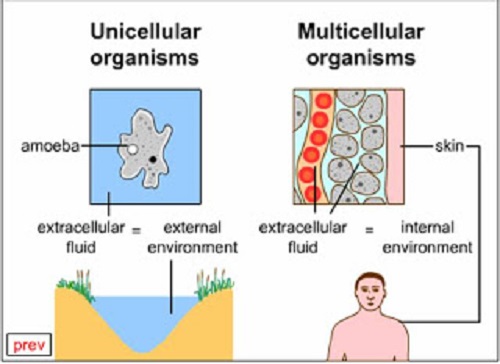
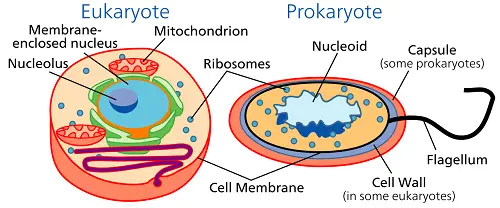
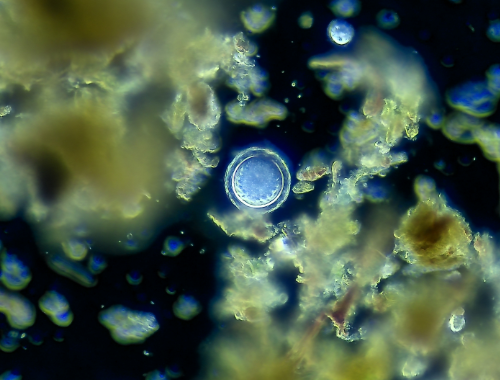
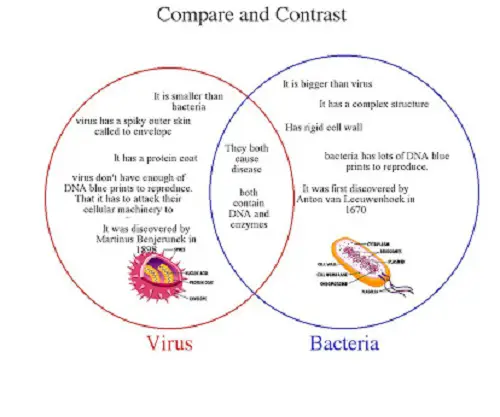
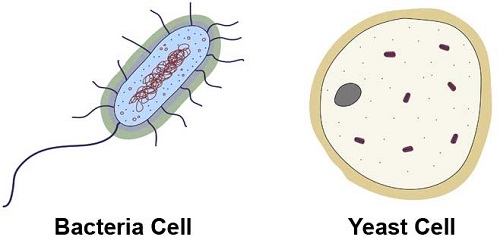
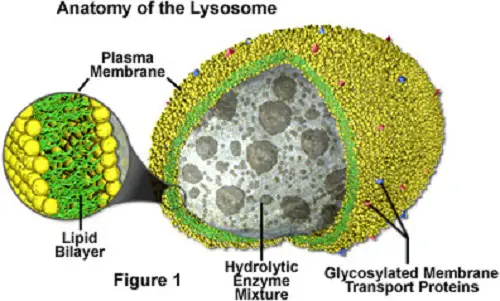





Leave a Reply